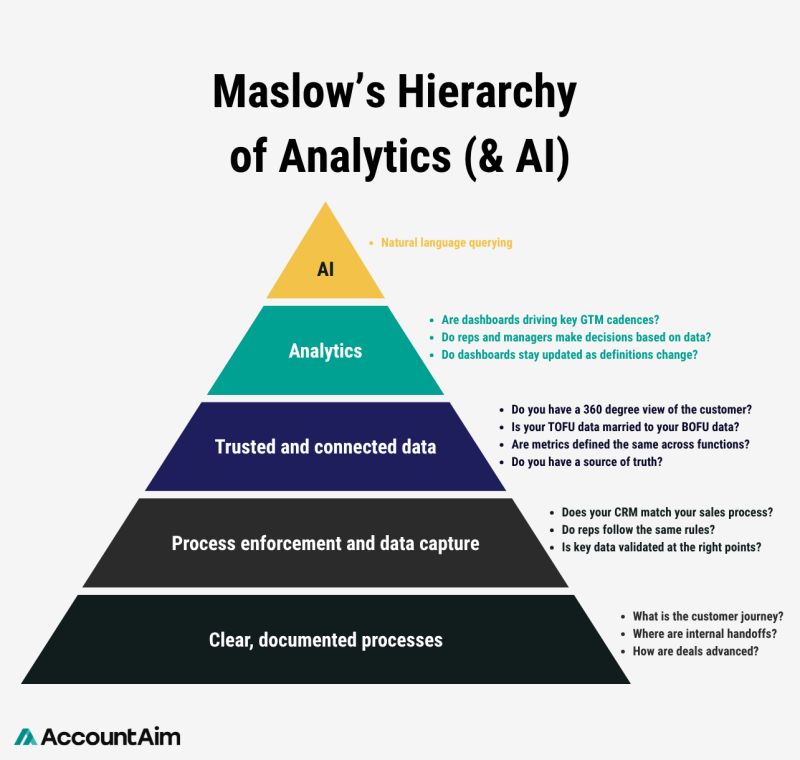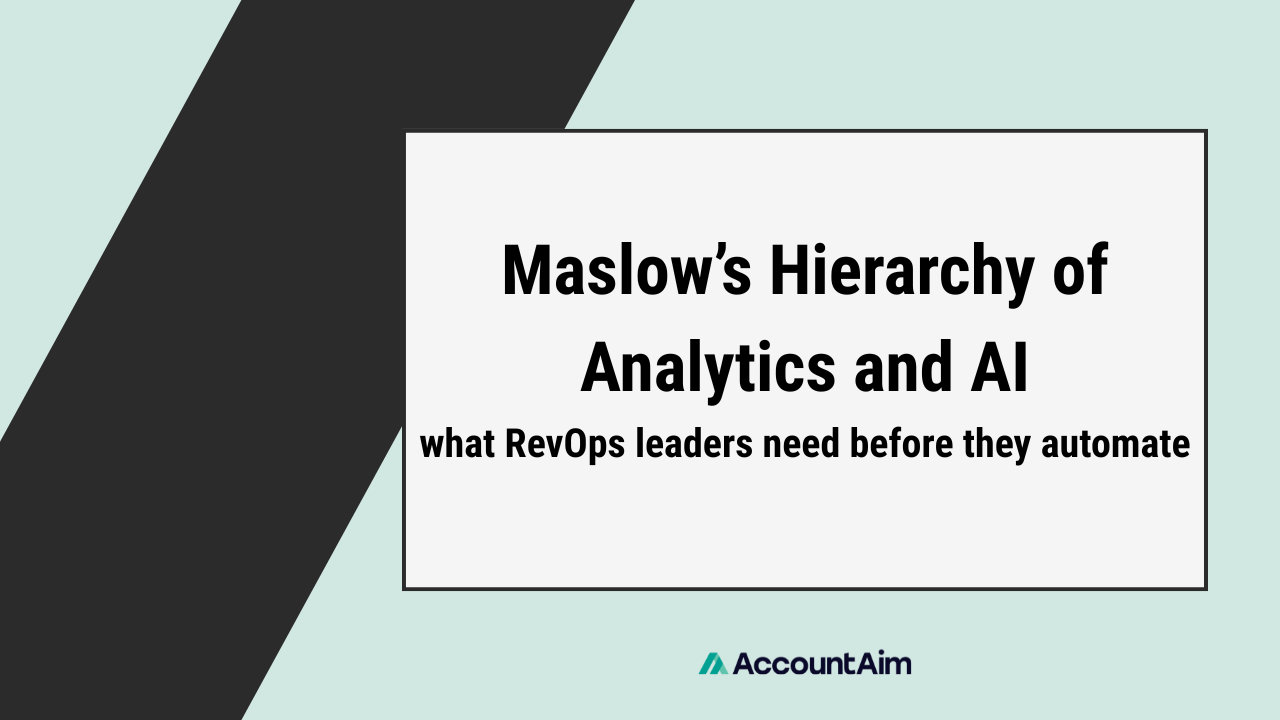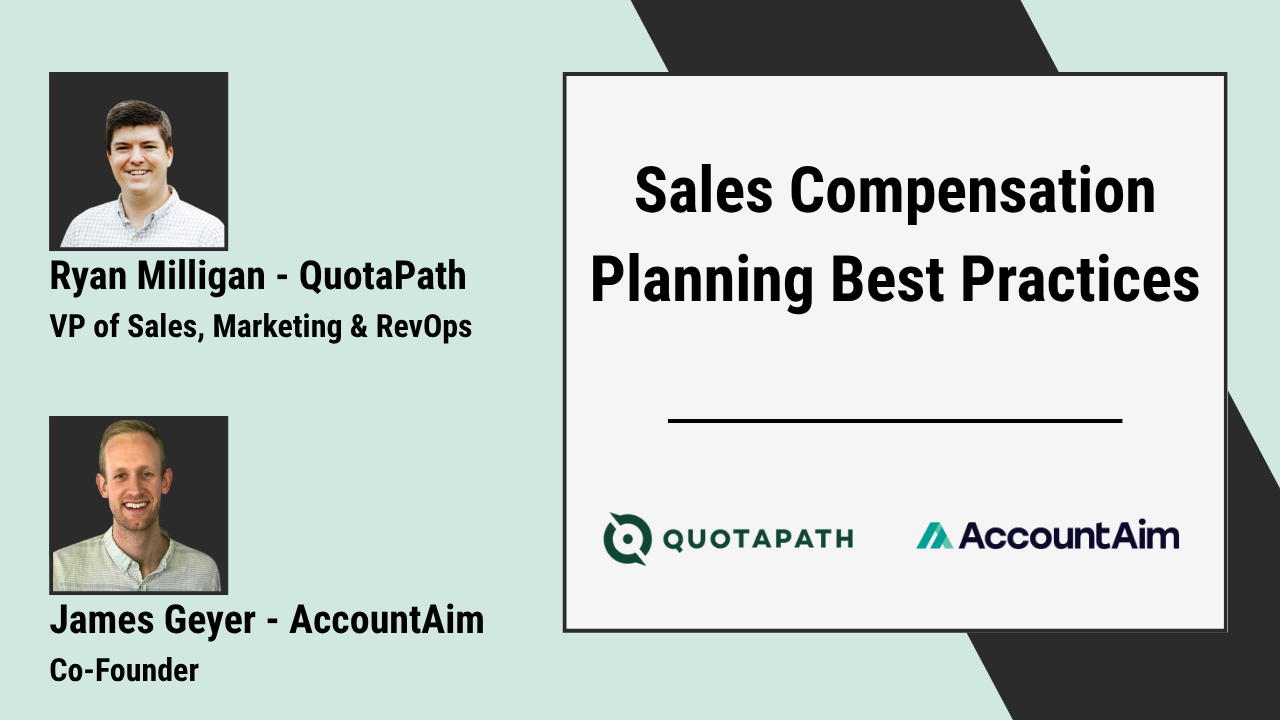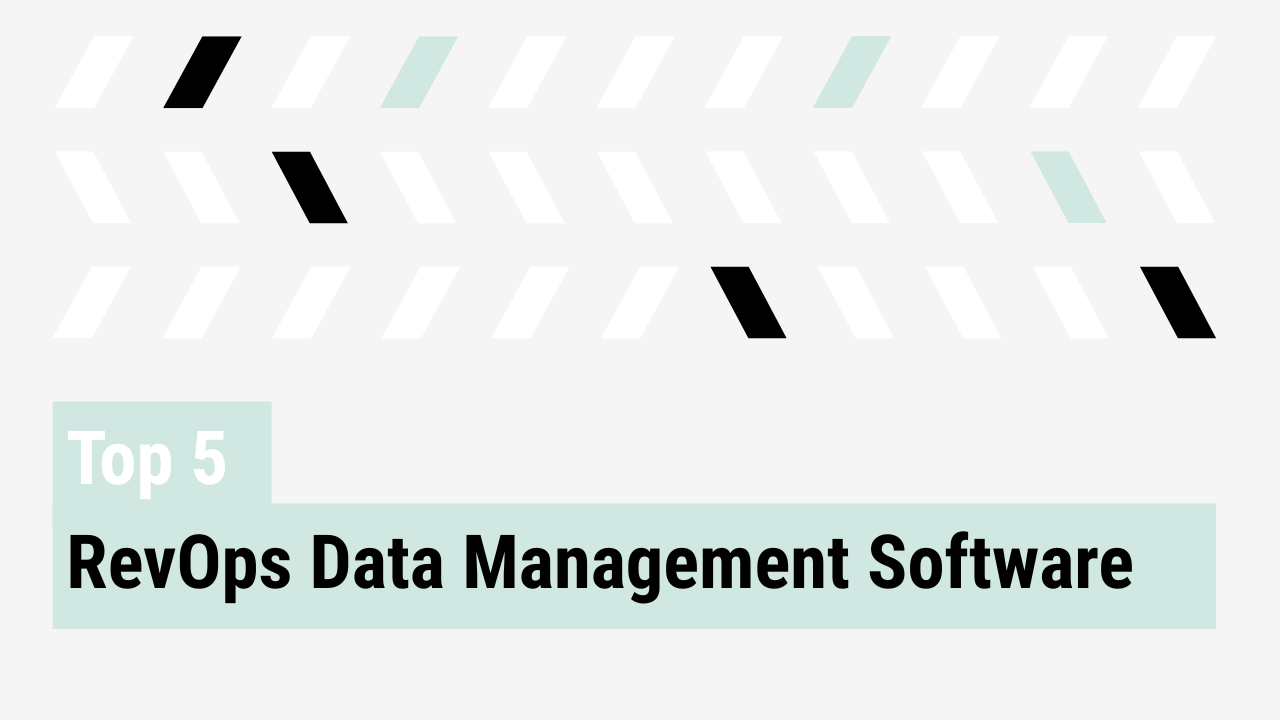Only 20% of RevOps leaders trust their CRM data, according to RevOps Co-op.
If you’re already testing AI for go-to-market analytics without a clean, connected foundation you’re not getting ahead. In fact, you’re setting yourself up for failure.
LLMs can’t fix bad assumptions or inconsistent definitions. What they do is amplify disorder. And when leadership starts making decisions off those outputs, the stakes rise fast.
To get real value from AI, you need to build up to it, starting with a solid GTM data layer.
The reality check: AI can’t fix broken analytics
The hype cycle is real. Everyone wants auto-generated board decks and predictive dashboards.
But here’s the truth: most companies are still manually stitching together reports every quarter. Redoing segment filters. Manually backtracking revenue classifications. Scrambling to align definitions across teams.
The real challenge is the underlying foundation.
It’s a classic case of garbage in, garbage out. If your inputs are flawed or inconsistent, the insights you extract, no matter how advanced the technology, will be just as unreliable.
The new hierarchy for RevOps analytics
Think of this as Maslow’s hierarchy, but for data infrastructure – Maslow’s Hierarch of Analytics and AI
Maslow’s original model is a psychological theory that outlines five tiers of human needs: physiological (like food and water), safety, love and belonging, esteem, and finally, self-actualization. His premise was simple: until the more basic needs are satisfied, you can’t truly focus on the higher-level ones.
Data infrastructure works the same way. Foundational layers like clear processes, enforced workflows, and trusted data must come first. Only then can advanced analytics and AI add meaningful value. You can’t skip steps. If any layer is weak, the whole system wobbles.

1. Clear, documented processes
If you can’t define your GTM process, you can’t measure or improve it.
What counts as a qualified opportunity? What should a “stage 3” opportunity look like? What’s considered an “active pipeline”?
You need shared answers before anything else. Start by mapping out your customer journey and defining each stage in detail. Document key handoffs between teams, criteria for stage progression, and required fields for every major activity. Collaborate with sales, marketing, and customer success leaders to validate these definitions and ensure they align with how the business actually operates. Once agreed upon, publish the process in a central, accessible location and use it to drive system configuration, onboarding, and reporting design.
“You craft the optimal processes or SOPs alongside the leaders and say, ‘We should also hold ourselves accountable to holding everyone accountable.’ The best way to do that is to have visibility throughout the year on how well we’re doing against the process we defined.”
— Jordan Kindler
2. Process enforcement and data capture
Now you make it real.
Ensure reps are following the same steps by aligning enablement, frontline manager coaching, and CRM workflows. Use role-based playbooks to define expected behaviors and actions at each stage of the sales process. In the CRM, enforce data capture with required fields, dependent picklists, and validation rules that prevent incomplete or inconsistent entries. Set up alerts or dashboards for data hygiene checks, and work with frontline managers to regularly audit activity and data quality. Build process metrics into your operating rhythm so leaders can track outcomes and adherence to the process that produces them.
If you don’t collect the right data consistently, you’re not building the foundation needed to move up the hierarchy.
3. Trusted, connected data
This is where most orgs break.
Your CRM may capture everything, but is it accurate? Is it enriched? Is it aligned across tools?
The RevOps Co-op reported that only 50% of CROs and just 20% of RevOps leaders believe their CRM data is clean. That number drops further when marketing automation, product usage, and finance data enter the mix.
Having trusted, connected data also sets the stage for effective AI implementation. Clean, unified data ensures that AI outputs are accurate and actionable. It allows systems to identify patterns across the full funnel, personalize insights, and automate meaningful recommendations. This is the turning point from using AI as a gimmick to using it as a strategic multiplier.
Until you can connect and trust your systems, AI is a distraction. AccountAim’s platform focuses on merging siloed systems, cleansing source data, and building a unified manual board reporting alternative that RevOps teams can actually rely on.
For RevOps leaders, establishing this layer of trusted, connected data is what enables them to position their company for AI readiness. It creates the conditions where AI can enhance strategic decisions, rather than introduce risk or noise. When data is dependable and centralized, leaders can confidently layer in automation and intelligence to scale insight, without second-guessing the foundation.
4. Analytics
With trust comes visibility. And visibility leads to better decisions if you design for usage.
Dashboards should be simple, specific, and embedded in weekly cadences. Managers and ICs should be referencing them in 1:1s.
When designed and used effectively, dashboards serve multiple purposes:
- drive consistent actions and behavior by reinforcing what matters most week after week
- ensure teams are aligned on the right metrics as defined by RevOps and executive leadership
- uncover data quality issues early, as users begin to notice gaps or inaccuracies in what should be trusted metrics.
This kind of structured visibility is critical for GTM repeatability and sustaining trust in your data.
“Cadences are absolutely a part of it. The dashboard you’re building should be a part of your operating rhythm. It should be used by the leaders of the business and viewed as genuinely valuable by everyone—ICs, managers, execs—because they believe it helps them do their jobs better.”
— Jordan Kindler
5. AI
Now you’re ready.
AI becomes an asset when it surfaces hidden trends, flags leading indicators, and enables non-technical teams to explore data safely.
Once the foundational layers are in place, RevOps leaders no longer have to question whether the data behind the insights is reliable. They can trust the outputs, shift focus to interpreting trends and guiding strategy, and stop burning cycles validating numbers. With confidence in the infrastructure, leaders are free to think about what matters most: enabling better decisions and driving outcomes.
Where most companies stand on Maslow’s Hierarchy of Analytics and AI
Unfortunately, most teams are still battling in the middle of Maslow’s Hierarchy of Analytics and AI. They may have defined some processes, but enforcement is spotty and data capture is inconsistent. Dashboards are created, but not regularly used or trusted. Metrics shift from quarter to quarter, and many definitions are still debated internally. The idea of a “single source of truth” remains more of a vision than an operational reality, with data silos and misaligned systems creating a persistent drag on performance.
Where strategic RevOps leaders should go next
RevOps leaders are meant to drive revenue alignment, simplify decision-making, and scale insight. AI tools can be a powerful enabler in this mission, but only if they are built on trusted data.
Getting to trusted AI starts with building a consistent, validated data foundation. It’s about knowing where the data comes from, how it was generated, and that it matches the defined business process. With this in place, AI can deliver recommendations that leaders actually trust.
The next step for any RevOps leader is to assess where their company stands on Maslow’s Hierarchy of Analytics and AI.
- Do you have clearly defined processes?
- Is your CRM capturing reliable data?
- Are your dashboards part of your operating cadence?
Once you know where you are, you can build upward layer by layer. Align cross-functional stakeholders, prioritize fixing your biggest data gaps, and create governance around metric definitions. Only then will AI become an amplifier of insight, not a liability.
That’s how you move from reactive to strategic. From spreadsheet builder to executive peer.
And it starts with one question: how strong is your GTM data layer?
Learn More
If you enjoyed this blog post, check out our full conversation with Jordan Kindler on YouTube or Spotify.



